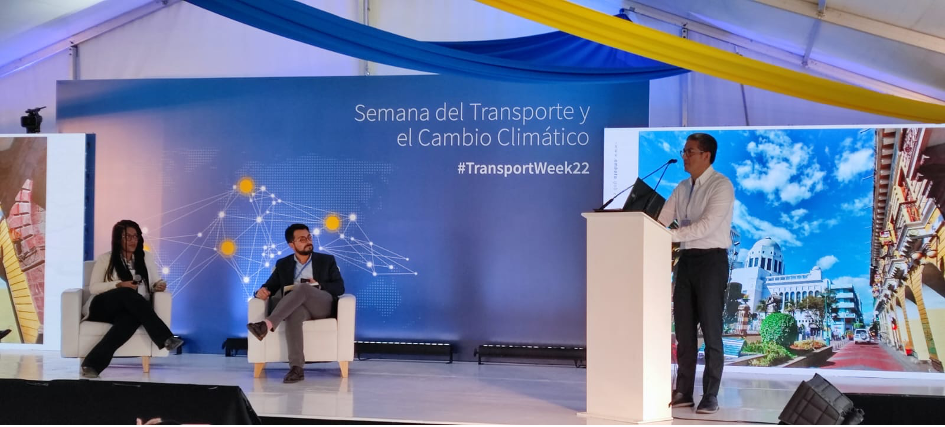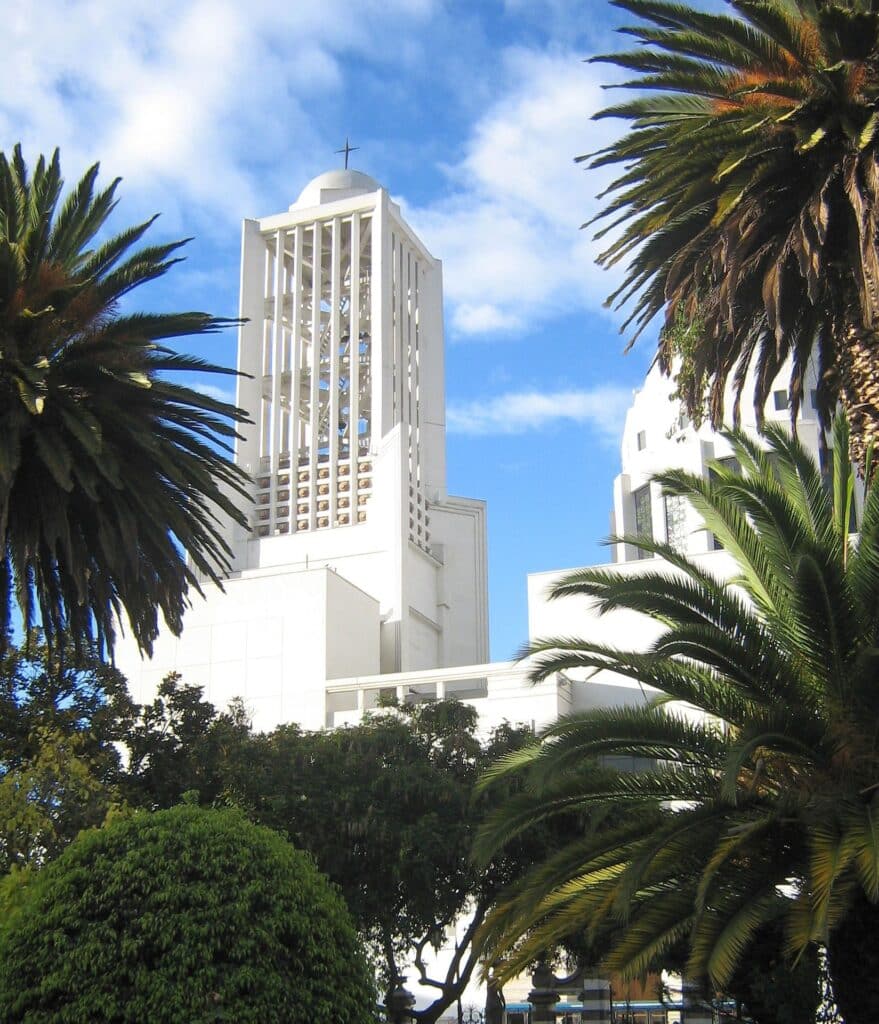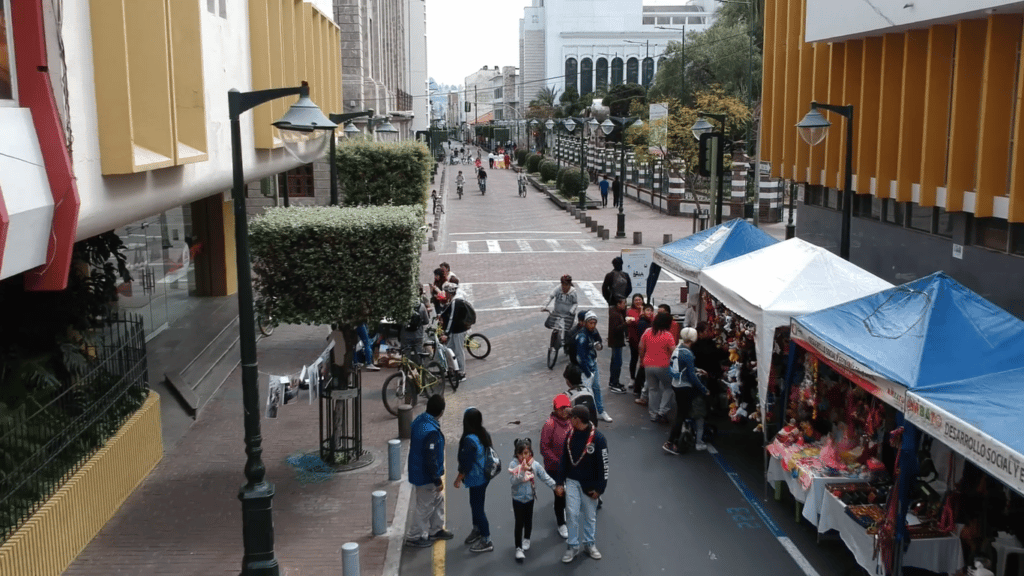
This article is part of our #StoriesofChange where we profile the work of our partner countries in developing climate actions in transport. Read more #StoriesOfChange and follow the Hashtag on Twitter.
As most cities in Ecuador, mobility in Ambato is based on a model that prioritized motorized vehicles, mainly buses and automobiles. The 2013 Mobility Master Plan focused on actions aiming at facilitating transit in the city main plateau and corridors to the urban center. Little consideration was given to connecting the urban zone with the rural areas, which are key in the life of the city, and to other sustainable means of transportation. The over US$ 900 million projected infrastructure and programs hardly made any attempt at exploring deeper the environmental issues and the social function that mobility serves.
The development of Ambato’s Sustainable Urban Mobility Plan (SUMP) brought to light the challenges vulnerable groups face when using the mobility system of the city. Another relevant issue that was revealed was the conditions in which indigenous people from the rural areas mobilize to the urban area to conduct their business, especially regarding the provision of agricultural products to the city.
In 2018, we started with this initiative through the EUROCLIMA+ programme. In May 2022, the SUMP Ambato was finally presented during the Transport and Climate Change Week 2022. This was possible thanks to a joint effort, a diagnosis and plan development phases, participations tools that were used to gain insights on the special needs that the mobility system needs to satisfy for these groups of citizens. Through origin-destination surveys, home-to-home surveys, focus groups and workshops, the city could inform a clear vision of the problems that needed to be addressed to provide better living standards through sustainable mobility systems.
Now, we can present some of the first results and next steps of the SUMP Ambato. This is the story.

Ambato is highly motorized city where men and women have different patterns of mobility. 40% of trips within the city are in private cars while 18% happen in buses. In average, women make 2.02 trips per day while men make 2.20 trip. This shows that women tend to stay at home more than men. Despite this fact, 53% of women use public transportation to travel and 44% of men use this means to do their travelling. Along with women, the elderly and children also preeminently use public transport to move around the city. This reveals that the main clients for public transportation are women, children, and the elderly, but those are exactly the groups that find the most challenges in public transport and public spaces such as sidewalks.

Safety is the first challenge that these vulnerable groups find in their trips. In the focus groups, women, children and the elderly alike revealed that they are exposed to mistreatment and harassment in public transport and spaces. Because people in this groups (including the disabled) need more time to get on and off buses, bus operators tend to avoid stopping or treat them rudely. In public spaces, they are exposed also to mistreatment by drivers and other people. This situation is specially challenging for female kids. Children also revealed that public transport and sidewalks make them feel uncomfortable because they are designed for adults and not for them.
In short, adult males face less danger because they are subject to harassment and safety issues during their trips in public spaces and they use more private cars which protects them from those dangers. The system and transport culture are hostile to vulnerable groups and the must stoically stand the challenges because they have no other safe options to satisfy their mobility needs.
The previous master plan did not recognize the differences that exist among the various groups of mobility users. By gathering the input of such groups, mobility measures can be directed to satisfy the special needs of traditionally excluded groups. Ambato’s SUMP, among its measure packages, does include now projects to make the city more accessible for vulnerable groups and the city needs to work with transport operators to become more sensible to their main clients.

Ambato’s rural and urban areas are closely knitted, even more noticeably so than other intermediate or large cities in Ecuador. Almost 30% of trips happen between the urban and rural areas and vice versa, and 18% within the rural area; that is, 48% of trips are linked to the rural area and the reason is mainly the transportation of agricultural products to the city markets. The importance of rurality in Ambato’s mobility system is key to support the city’s heavy commercial character. Ambato is actually a food distribution hub for most of the country because it is strategically place in the middle of Ecuador, with access to all three continental regions (Amazonia, highlands and coast).
The SUMP methodology focuses on the urban area, but in the case of Ambato it needed to expand and include the rural area because of its importance. This adaptation was a demand of the unique characteristics of the city and, on the political side, of the City Council’s Mobility Commission; the members of this commission are all indigenous persons from rural electoral districts.
When exploring the rurality for mobility patterns, the challenges described for vulnerable groups are still present, but their intensity is higher. The linkages between the urban and rural areas are weak due to insufficient public transport which created opportunities for informal transportation means to be exploited. However, informal transport is more expensive than public transport and exposes the population to risks of increased financial pressure to their already deficient economies.
The challenges for women are even tougher to rural women because every Monday they need to travel to the city center to sell their products with their children, leaving them more exposed to safety risk in uncomfortable means of transportation. The SUMP proposes to increase the connection to the rural areas with better roads and more public transport services.
Integrate the concept of sustainability in mobility planning, proposing a new model of urban development that is egalitarian (accessible to all and with an emphasis on gender); healthy (reduction of accidents and pollution); and friendly (social integration of encounter and safe coexistence). This change seeks to replace the traditional model that favours the motorised vehicle and will seek to give priority to rural areas of the canton, to other collective and active modes of mobility, but above all to a new urban configuration and environmental protection, which will contribute to the reduction of poverty and gender gaps in the city.
SUMP Ambato’s vision
With the SUMP, mobility in Ambato has undertaken a change in its mobility model, based on the introduction of new technical, institutional, legal, social and financial factors. Its action plan contains 10 packages of measures covering one or more of the three structural models: clean mobility, energy transition and social and environmental equity.
These packages integrate measures such as interventions for sustainable mobility, transport demand management plan, GHG reduction programme in transport, programme to reduce inequality, poverty and gender gap in transport, among others.

For the implementation of these measures, the SUMP contains fact sheets detailing their place and period of implementation, objectives, actions to be implemented and budget.
This has been agreed with the institutions involved in the planning of the city’s mobility, to whom a financial analysis has been presented that takes into account the sources of resources available to the municipality and other national and international cooperation sources.
Good news is that the EUROCLIMA+ programme is also developing a National Urban Mobility Policy (NUMP) in Ecuador, which will generate synergies with the SUMP Ambato and will allow other cantons to develop similar initiatives.

The city mobility planning was based on a Master Plan that was built with a paradigm based on moving vehicles in the city. Users were not differentiated, and their specific needs were ignored. The SUMP is helping Ambato to abandon this paradigm by revealing the real situation of most users and proposing measures that will satisfy their needs.
For its implementation, the work plan indicates that the municipality is working on financial management and institutional, technical and legal capacity building measures, including the development of monitoring indicators to measure the achievement of objectives.
In addition, Ambato is part of the Intermediary Cities Programme II, commissioned by BMZ, which will allow the implementation of sustainable mobility actions aligned to the SUMP.
Mobility planning is now a more human endeavor which will contribute to develop a city more amiable to their inhabitants. The sustainable planning exercise has also shifted the very conception of the city from a commercial space that distributes products to the country to a city with diverse purposes based on the recognition and inclusion of diversity.

If you believe that you suffer (potential) negative social and/or environmental consequences from IKI projects, or wish to report the improper use of funds, to voice complaints and seek redress, you can do so using the IKI Independent Complaint Mechanism.